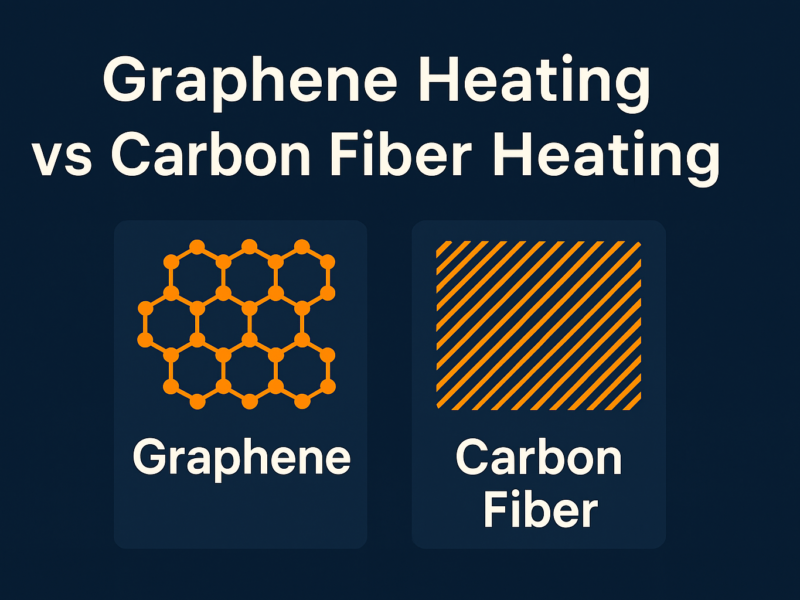
✅ Graphene Heating vs Carbon Fiber Heating: Principles and Differences
1️⃣ Principles of Graphene Heating
Graphene heating works by emitting infrared radiation when graphene is heated. This relies on graphene’s unique conductive and optical properties. When an electric current passes through the graphene film, high-energy electrons interact with the graphene layers. This process converts electrical energy into thermal energy, releasing infrared radiation and generating heat rapidly and evenly.
2️⃣ Principles of Carbon Fiber Heating
Carbon fiber heating works on the principle of resistance heating. When electric current flows through carbon fiber, heat is generated due to its low resistivity. Carbon fiber heating requires precise current control to achieve the desired temperature and stable output. Carbon fiber is also known for its high strength, light weight, and excellent temperature stability. It heats up quickly, provides even heating, and produces no electromagnetic waves or harmful radiation.
3️⃣ Key Differences Between Graphene and Carbon Fiber Heating
✅ Energy Conversion Efficiency and Response Speed
Graphene has higher energy conversion efficiency and a faster response speed than carbon fiber. Thanks to its superior optical and conductive properties, graphene can convert electrical energy into thermal energy more effectively. It emits infrared radiation almost instantly when powered on, making it ideal for products that need rapid heating.
✅ Adjustability and Application Scope
Carbon fiber heating offers greater adjustability. By changing the shape or structure of the conductive fibers, the resistivity can be customized to control heating power and coverage. This flexibility makes carbon fiber heating widely used in products like water heaters, car seat warmers, or industrial heat pads.
Graphene heating, in contrast, is mainly used in applications that require high-efficiency and fast response, such as heated mattresses, gloves, or hand warmers.
✅ Flexibility
Graphene is an ultra-thin, flexible material, ideal for heaters that need to bend or fit special shapes. Carbon fiber is also flexible but can be more brittle compared to graphene.
✅ Manufacturing Cost
Currently, graphene production remains relatively expensive due to its complex manufacturing process. Carbon fiber is also high-cost, but generally more economical than graphene for large-scale industrial applications.
✅ Thermal Conductivity
Both graphene and carbon fiber offer excellent thermal conductivity. However, graphene typically has higher heat transfer efficiency, providing faster and more uniform heating.
4️⃣ Typical Application Areas
- Graphene heating: Commonly used in heated gloves, jackets, seat cushions, knee pads, and other personal heating products that require fast, even warmth.
- Carbon fiber heating: Widely used in aviation, aerospace, automotive, and energy sectors. It’s often found in high-temperature insulation, snow-melting systems, or preheating equipment like oil pumps.
✅ 5️⃣ Summary
Graphene heating and carbon fiber heating each have unique advantages and applications. Graphene provides rapid, efficient, and flexible heating, perfect for smart wearables where comfort and quick heat-up are important. Carbon fiber heating is durable, adjustable, and suited for a wide range of larger-scale industrial or automotive applications.
When choosing between graphene and carbon fiber heating, consider your budget, required flexibility, and the specific heating effect you need. Both materials deliver excellent thermal performance — the right choice depends on your unique scenario.
📌 If you’d like to learn more about custom heating solutions or OEM opportunities, please reach us at info@yubinglobal.com.

Recent Comments